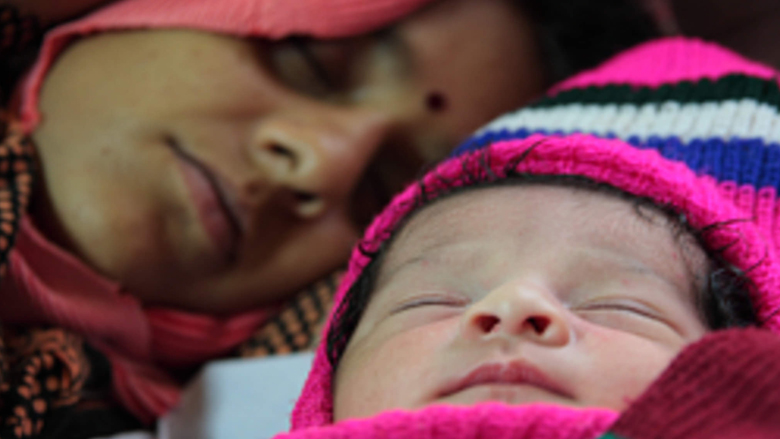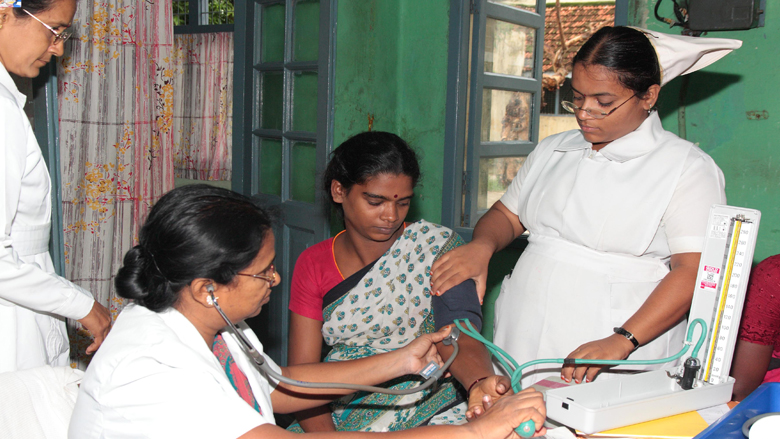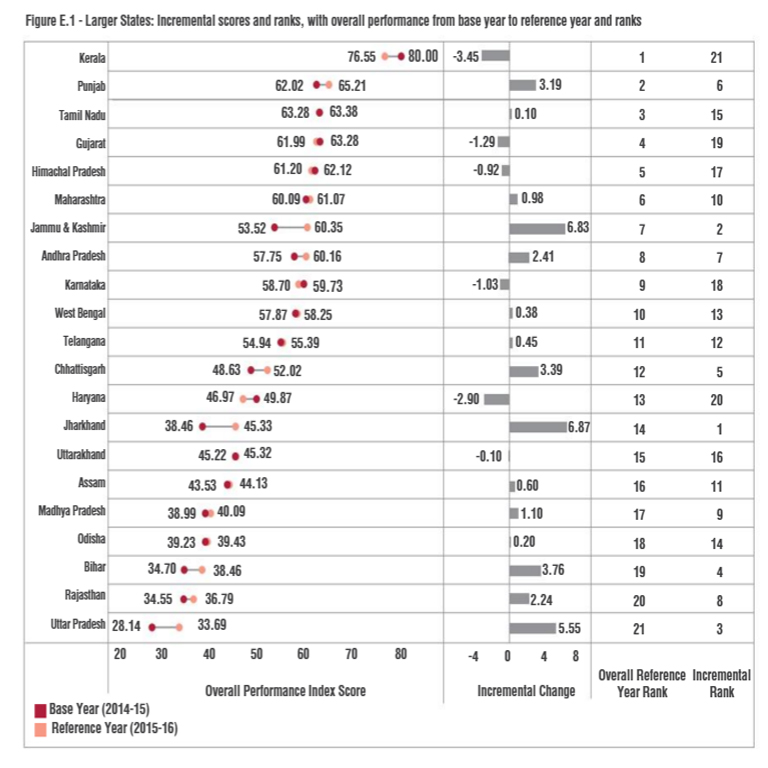India has achieved notable gains in improving life expectancy, reducing maternal and child mortality, and addressing other health priorities. However, it has fallen short of several national and global targets. There are also wide variations across states in their health outcomes and health systems performance.
To bring about a transformational change in the health of the people, the NITI Aayog in collaboration with the World Bank and the Ministry of Health and Family Welfare (MoHFW) embarked on a journey to develop a Health Index, - a first ever systematic exercise – for tracking the progress on health outcomes and health systems performance across states and Union Territories (UTs) in India on an annual basis.
The Health Index ranks states against a range of indicators such as the neo-natal mortality rate (deaths occurring in the first 28 days of life), full immunization coverage, treatment success rate of confirmed tuberculosis cases, stability of tenure of key administrators, vacancy of doctors and specialists in health facilities, and functionality of primary health centres, first referral units and Cardiac Care Units, are included in the Index.
Twin goals
The goal of the Index is not just to rank the states based on their overall performance, but also on their incremental annual performance since the progress that is achieved cumulatively by the states and the Union Territories will define India’s destiny. To draw comparisons among similar entities, states and Union Territories have been ranked in three categories namely, Larger States, Smaller States, and Union Territories.




